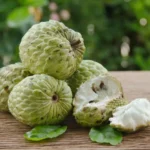
Turkish coffee is well known for its consistency on the rich taste and it also has a historical background traced back to the Middle East. Normally, it is made with a special pot called cezve combined with thin granular coffee powder. Nevertheless, if you do not have a cezve you can still indulge your taste with this wonderful drink saying one has to have every equipment except for a cezve, to make Turkish coffee. In this article I will show how easy is it to make Turkish coffee without cezve, the best way to grind coffee beans and ensure a good Turkish coffee.
Can You Make Turkish Coffee Without Cezve

Of course! It is very simple to prepare Turkish coffee without a cezve! Searching for a cup or pot with a neck, many cooks would prefer a heat resistant one. Instead, I made use of simple, straightforward ground coffee. I mean I did so in order to experience that challenging authentic flavorful Turkish coffee.
How to Make Turkish Coffee Without Cezve? 3 Methods
There are some crucial pointers on how to prepare and suitably serve Turkish coffee without the use of a cezve. Below follow stepwise instructions regarding the execution of each of the literaceous methods discussed above.
1. Making Turkish Coffee on the Stove
This method is the most common and the easiest one for preparing Turkish coffee.
You begin with fresh premium quality coffee grounds. The level of the coffee beans would affect the taste of the coffee during the exploding.
Select a small oven-safe pitcher with a neck that isn’t broad. Fill the pot with 2 tablespoons of ground coffee and subsequently add in filtered water. Instead of increasing coffee using an additional tablespoon, do that to come up with a stronger flavor of the manufactured coffee.
Combine the two and add the pot on a medium flame after mixing it well with a spoon. If you want, sweeten with sugar.
Carefully take the pot away from the stove when the bubbles begin to appear and put it aside for a few seconds until the bubbles come down.
Then low heat again to the pot and wait until the bubbles will come up once again.
When the coffee raped brought essential bubbles rise let the coffee pot go and keep the coffee pounded coffee powder down.
Enjoy delicious Turkish coffee and drink it from the cup
2. Making Turkish Coffee in the Microwave

It is succinctly effective, however, the process is able to save time but must always be observed so that burnt flavour does not occur.
Taken a microwavesafe cup, wrap it in warm beefstock and add about 12 tablespoons of very good ground coffee and around 100120 ml warm water. One tablespoon of sugar may be added if you wish.
Mix until thoroughly combined.
Dietary hot soup using a microwave oven is the comfort of our times, but when using microwave ovens, place the cup in the belly of the appliance het, cup which raises the temperature microwave for thirty seconds to one minute depending on water temperature in a glass before adding J Oile Oile U A botella.
These gloves are very hot, please remove the cup carefully using gloves or cloth.
For 12 minutes, continue to stir the coffee until thick foam develops on the surface. Do not rush in pouring out the brewed coffee, instead let it stay intact for some time so that the grinds can settle. And here’s how your Turkish coffee is ready to be served!
3. Making Turkish Coffee in an Electric Kettle

This is one of the easiest ways if you are in possession of an electric kettle.
Prepare the same amount of water and the same amount of coffee that you usually use, which is generally 1 tablespoon of coffee for 100120ml of water.
Place the water and coffee grounds into the kettle. If you like it sweet, add additional sugar as well.
Blend all the ingredients well so that they all incorporate into each other well.
Plug the kettle and switch it on at the lowest heat setting. It should be remembered that turkish coffee tends to boil very fast so one has to keep an eye on it.
As it comes to a boil turn off the kettle and set it aside for about a minute whilst stirring constantly.
After that the grounds will settle at the bottom and you can pour yourself a cup of coffee.
What Beans Should be Used for Turkish Coffee?
It is best to use Arabica coffee beans as this type is recommended for Turkish coffee due to its finer taste. However, a blend of Arabica and Robusta beans can also provide a reasonably priced solution.
Darkroasted coffee beans are highly recommended for use if dark and rich coffee favor is desired. Coffee beans should be ground just before use. If a grinder is not available, you may buy freshly roasted and ground Arabica and Robusta coffee at grocery stores.
History of Turkish Coffee
Turkish coffee has a rich history that dates back to the Ottoman Empire, where it became an essential part of social life and hospitality. Traditionally, it is served in small cups and enjoyed slowly, often accompanied by sweets or water. Understanding its cultural significance adds to the appreciation of this unique brew.
The Art of Coffee Grinding
The grind size is crucial for brewing Turkish coffee. Aim for a texture similar to powdered sugar. A burr grinder is highly recommended for achieving this fine consistency. Properly ground coffee ensures maximum flavor extraction during the brewing process.”
Serving Suggestions
Turkish coffee is traditionally served with a glass of water and a sweet treat like Turkish delight or baklava. The sweetness of the treats complements the coffee’s rich flavor and enhances the overall experience
Health Benefits of Turkish Coffee
Turkish coffee is not only delicious but also packed with antioxidants. Regular consumption may improve mental alertness and even reduce the risk of certain diseases. Enjoying it in moderation can be part of a healthy lifestyle
Common Mistakes to Avoid
To get the best flavor from your Turkish coffee, avoid common mistakes such as using water that is too hot, not stirring enough, or using coffee that is not finely ground. Paying attention to these details can significantly improve your brew.
Variations on Traditional Turkish Coffee
Consider adding spices like cardamom or cinnamon to your coffee for a unique twist. These flavors are often used in Turkish coffee preparation and can enhance the drink’s aroma and taste.
Cultural Etiquette
When serving Turkish coffee, it’s customary to offer water first. This is believed to cleanse the palate and prepare the guest for the rich flavors of the coffee. Taking time to enjoy the drink is also an essential part of the experience.
Comparison with Other Coffee Types
Unlike espresso, which is brewed under pressure, Turkish coffee is simmered slowly to create a thicker consistency and richer flavor. This method sets it apart from other brewing styles, making it a beloved choice among coffee enthusiasts
History of Turkish Coffee
Turkish coffee has a rich history that dates back to the Ottoman Empire, where it became an essential part of social life and hospitality. Traditionally, it is served in small cups and enjoyed slowly, often accompanied by sweets or water. Understanding its cultural significance adds to the appreciation of this unique brew.
The Art of Coffee Grinding
The grind size is crucial for brewing Turkish coffee. Aim for a texture similar to powdered sugar. A burr grinder is highly recommended for achieving this fine consistency. Properly ground coffee ensures maximum flavor extraction during the brewing process.
Serving Suggestions
Turkish coffee is traditionally served with a glass of water and a sweet treat like Turkish delight or baklava. The sweetness of the treats complements the coffee’s rich flavor and enhances the overall experience.
Health Benefits of Turkish Coffee
Turkish coffee is not only delicious but also packed with antioxidants. Regular consumption may improve mental alertness and even reduce the risk of certain diseases. Enjoying it in moderation can be part of a healthy lifestyle
Common Mistakes to Avoid
To get the best flavor from your Turkish coffee, avoid common mistakes such as using water that is too hot, not stirring enough, or using coffee that is not finely ground. Paying attention to these details can significantly improve your brew.
Variations on Traditional Turkish Coffee
Consider adding spices like cardamom or cinnamon to your coffee for a unique twist. These flavors are often used in Turkish coffee preparation and can enhance the drink’s aroma and taste.
Comparison with Other Coffee Types
Unlike espresso, which is brewed under pressure, Turkish coffee is simmered slowly to create a thicker consistency and richer flavor. This method sets it apart from other brewing styles, making it a beloved choice among coffee enthusiasts
Yes, you can use regular coffee grounds like Arabica or Robusta, but ensure the grind size resembles powdered sugar, finer than espresso. A burr grinder is recommended for achieving the ideal consistency.
Turkish coffee is celebrated for its rich flavor and aroma, achieved through its unique preparation and serving style
No, Turkish coffee doesn’t require a filter. The finely ground coffee settles at the bottom of the cup, creating a flavorful froth on top without the need for filtration.
Yes, milk can be added for a creamier taste, though traditional Turkish coffee is served without milk. Many coffee enthusiasts prefer the raw, rich flavor of unadulterated Turkish coffee.
Yes, your Turkish coffee will still taste great without a cezve, although you might miss the rich foam that a cezve produces. If you’re okay with sacrificing the foam, you can enjoy delicious Turkish coffee without it.
Hi there! I’m content writer and blogger. With over two years of experience, I’ve shared my passion for writing across various platforms. I firmly believe in the transformative power of words and look forward to sharing this journey with you. Enjoy my work!










